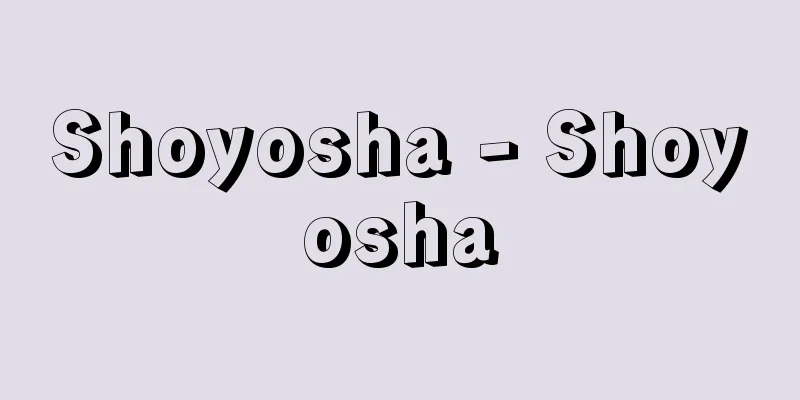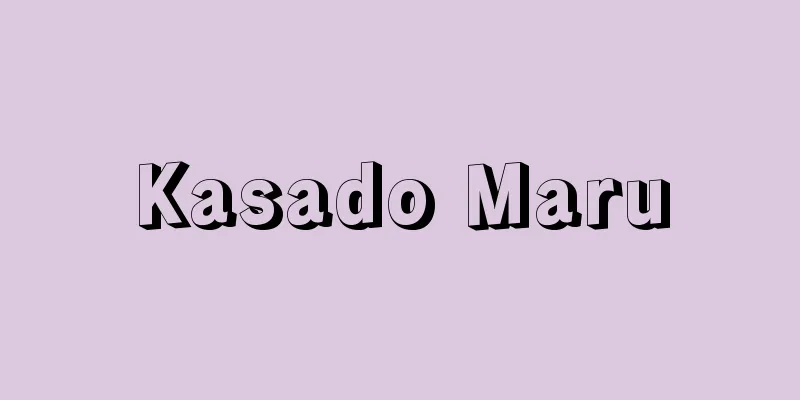The following text - Kudashibumi

|
A form of ancient document. It is a document sent by a superior to the government offices, vassals, and people under his control, and is characterized by the word "kudasu" at the beginning of the letter. In the old days, the main text was also written as "kudasu" (specially below) or "mottekudasu" (below). The documents issued under the official ordinances were fu and cho, but in the Heian period, the benkan kabun (official decree), which was easier to follow than the dajokan fu, became more common. After this, kabuns began to be issued by government offices outside the official ordinances, such as the kurodokoro and kebiishi no cho, the incho, the sekkanke and other nobles, shrines, and temples. The Kamakura Shogunate also followed the example of Minamoto no Yoritomo and used shimono for important matters such as the fulfillment of fiefs and confirmations, and it was customary to issue sodehan shimono when the Shogun was of low rank, and mandokoro shimono when he reached the rank of Sanmi. During the era of princely Shoguns, mandokoro shimono was used from the beginning. During the Muromachi period, the Ashikaga Shoguns also issued shimono, but they did not use mandokoro shimono, and they almost never were used after the third Shogun, Yoshimitsu. Other samurai families that issued shimono included the Hojo clan in the Kamakura period and the Suo Ouchi clan in the Muromachi period. [Momose Kesao] Source: Shogakukan Encyclopedia Nipponica About Encyclopedia Nipponica Information | Legend |
|
古文書の一形式。上位者が、支配下にある役所や家臣、人民あてに出した文書で、書出しに「下(くだす)」と書くのが特徴。古くは本文の書留めも「故下(ことさらにくだす)」「以下(もってくだす)」などとした。公式令(くしきりょう)に定められた下達文書は符(ふ)と牒(ちょう)であったが、平安時代には、太政官符(だいじょうかんぷ)よりも手続の簡単な弁官(べんかん)下文(官宣旨(かんせんじ))が多く使用されるようになった。こののち令外(りょうげ)の役所である蔵人所(くろうどどころ)や検非違使庁(けびいしのちょう)や、院庁、摂関家(せっかんけ)をはじめとする公卿(くぎょう)、社寺などでも下文を出すようになった。 鎌倉幕府でも、源頼朝(よりとも)の例に従い、知行(ちぎょう)の充行(あておこな)い、安堵(あんど)など重要な事柄には下文を用い、将軍の位階が低いときには袖判(そではん)の下文、三位(さんみ)に進むと政所(まんどころ)下文を発行する慣習であった。親王将軍の時代は、当初から政所下文を用いた。室町時代、足利(あしかが)将軍も下文を発給したが、政所下文は用いず、3代将軍義満(よしみつ)ののちはほとんど使わなくなった。将軍以外の武家では、鎌倉時代の北条氏、室町時代の周防(すおう)大内氏などが下文を出している。 [百瀬今朝雄] 出典 小学館 日本大百科全書(ニッポニカ)日本大百科全書(ニッポニカ)について 情報 | 凡例 |
Recommend
Zhao Mengfu - Cho Mofu
He was a Chinese government official, calligraphe...
All German
...A general term for the ideas, movements, and p...
Reeds swaying in the wind
A full-length novel by Ishikawa Tatsuzo (1905-85)....
Consolidation of shares - Kabushiki no Heigo
...Also, as described below, the net asset value ...
Kyoto Highway - Kyokaido
A highway that connected Kyoto and Osaka in the ea...
《Sinuhe the Egyptian》 - Egyptian Sinuhe
…Finnish author. His father was a university lect...
Habu Ruins
The remains of a settlement from the early to midd...
Drowned valley
A landform that was originally a valley on land h...
Yokoshiba [town] - Yokoshiba
An old town in Sanbu District, northeastern Chiba ...
Isoflattice - Isoflattice
...It is found on the coasts of Hokkaido and nort...
"Experiments on Air" - Experiments on Air
...He discovered hydrogen gas (combustible air), ...
Taiko Hirabayashi - Taiko Hirabayashi
Novelist. Born in Nagano Prefecture on October 3,...
Treasurer - Suitoucho
One of the auxiliary bodies of the mayor of an ord...
Macip, V. (English spelling) MacipV
... The Middle Ages in Spain continued until the ...
Rhinobatos schlegelii (English spelling) Rhinobatosschlegelii
…There are 45 species of Rhinobatoids in the worl...



![Fukue [city] - Fukue](/upload/images/67ccaf9f83128.webp)
![Kara [River] - From](/upload/images/67d021770fc09.webp)




